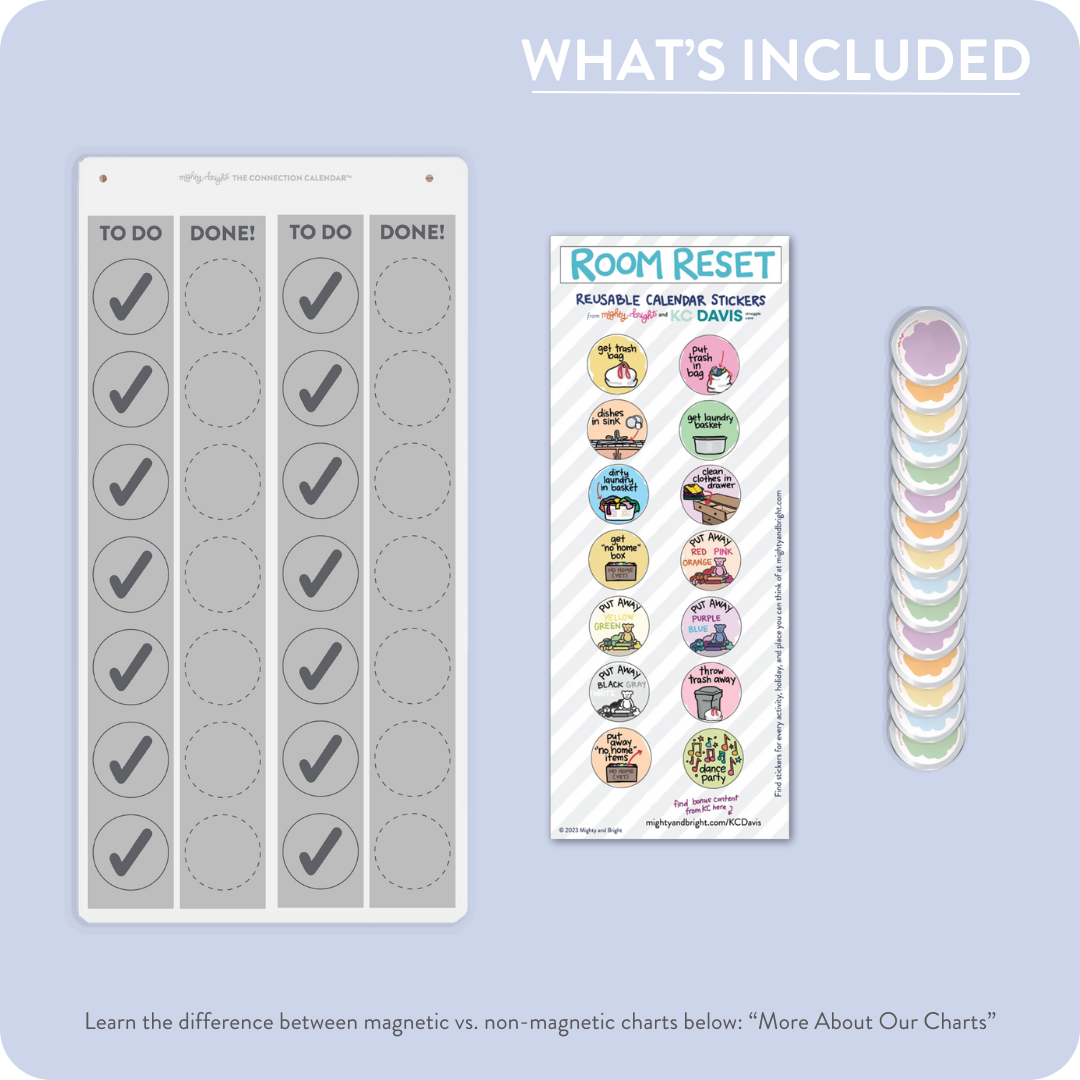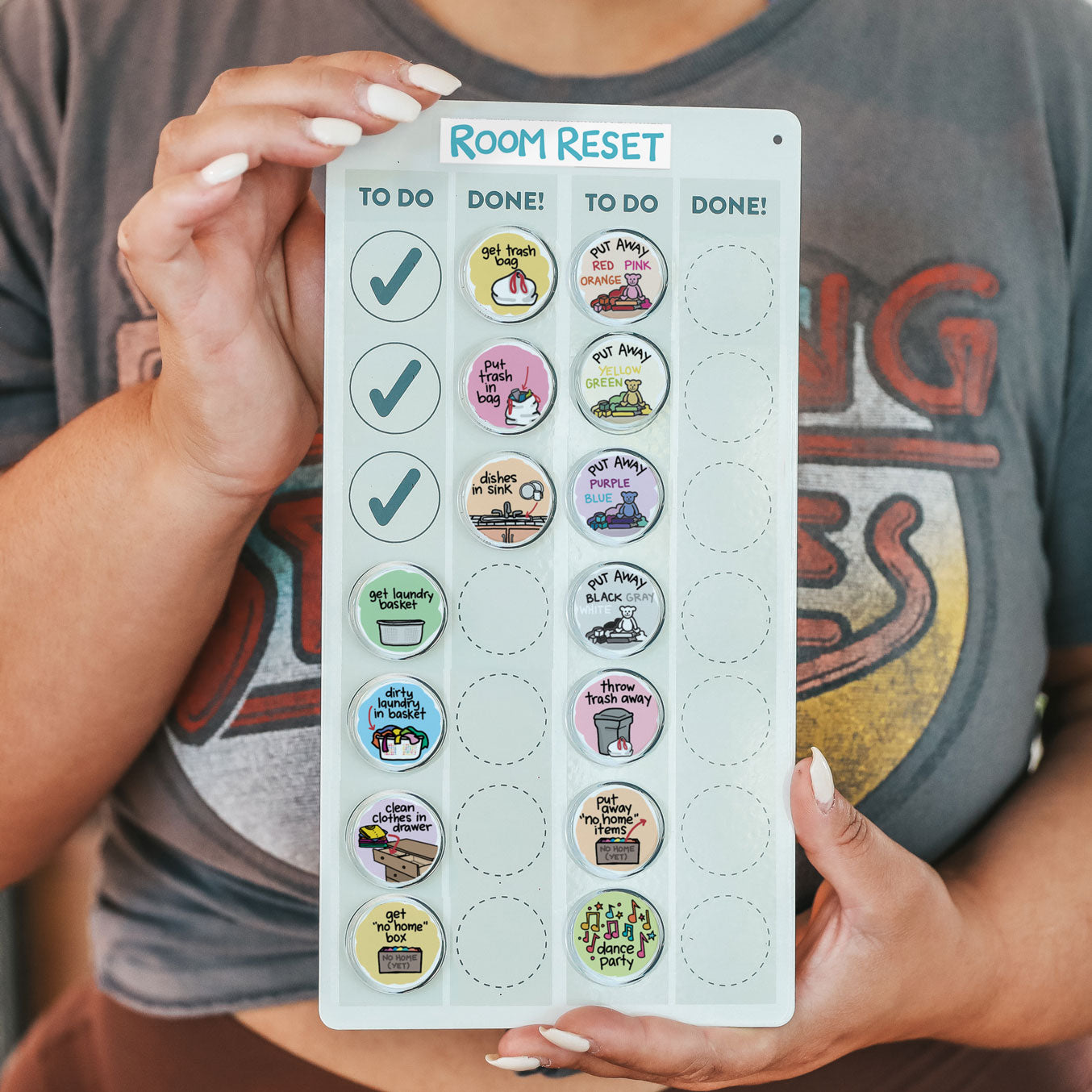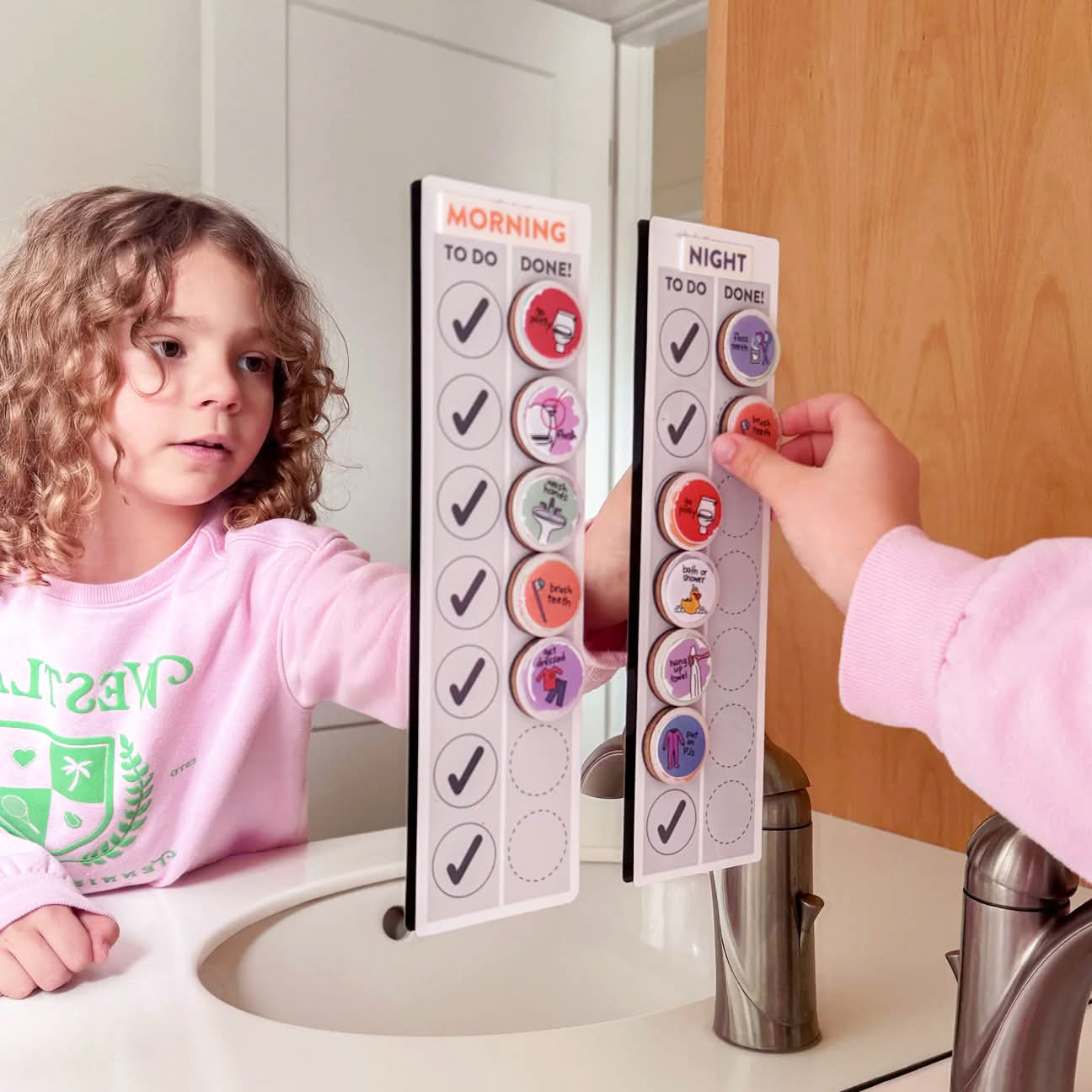Kids Room Reset Chart for a Tidy Room (with KC Davis)
$49.00
Free shipping over $59
- One Mighty + Bright Task chart
- 14 super-tough resin magnets
- Set of reusable stickers: Room Reset" title to label your task chart, Get Trash Bag, Put Trash in Bag, Dishes in Sink, Get Laundry Basket, Dirty Laundry in Basket, Clean Clothes in Drawer, Get "No home" box, Put Away - red, pink, orange, Put Away - yellow, green, Put Away - purple, blue, Put Away - black, gray, white, Throw Trash Away, Put Away "No Home" items, Dance Party

















